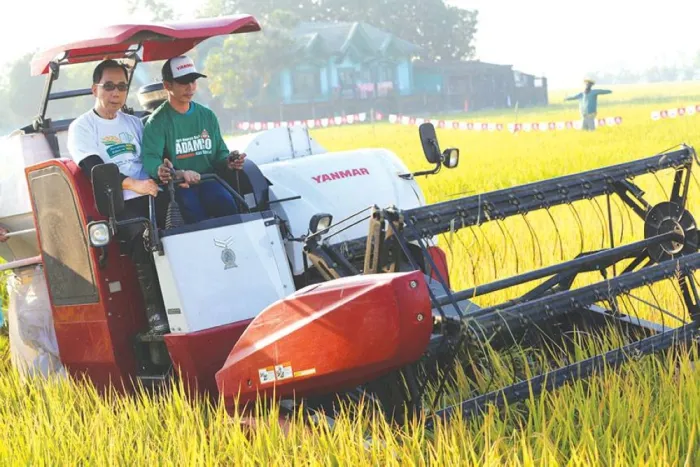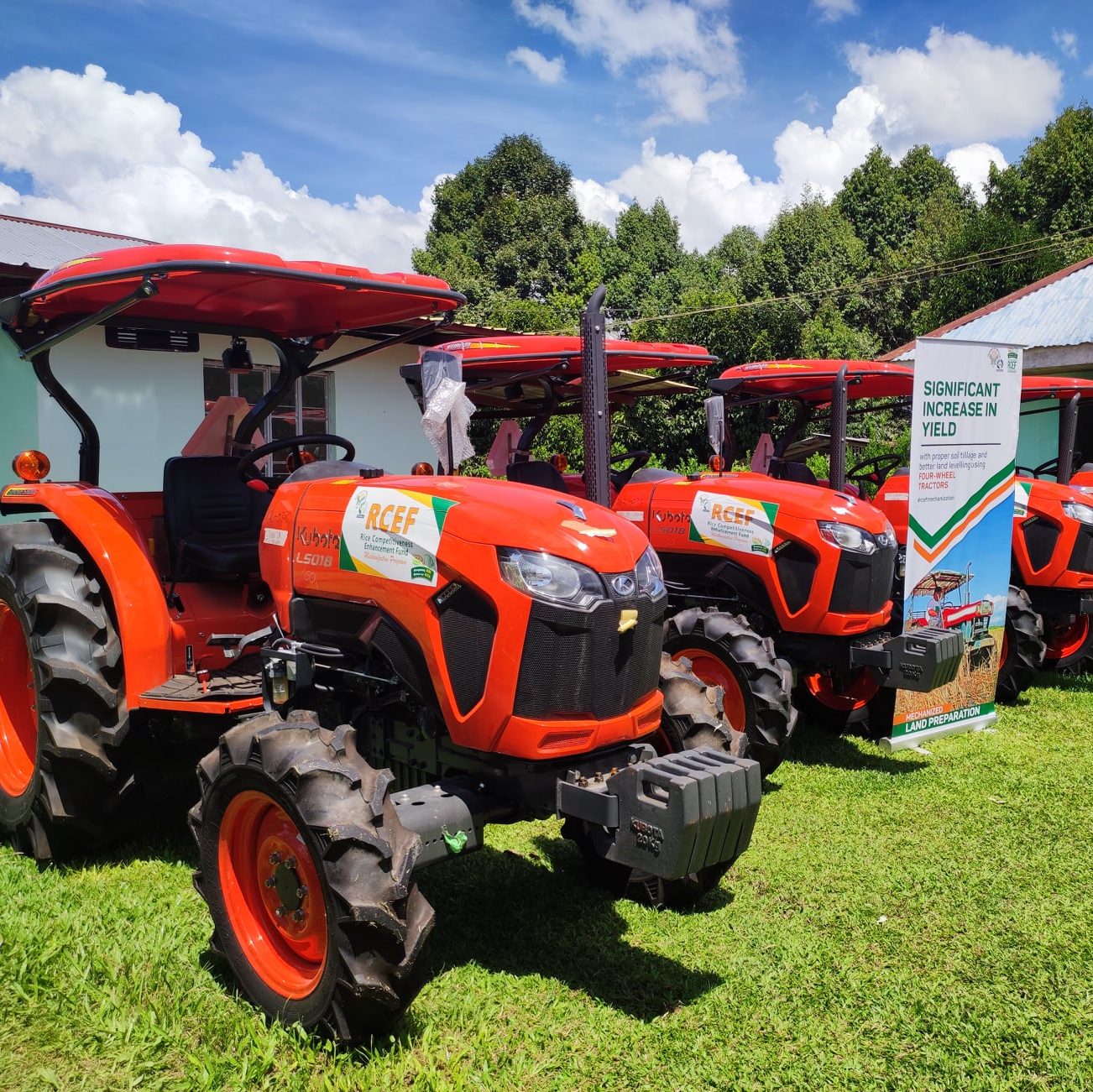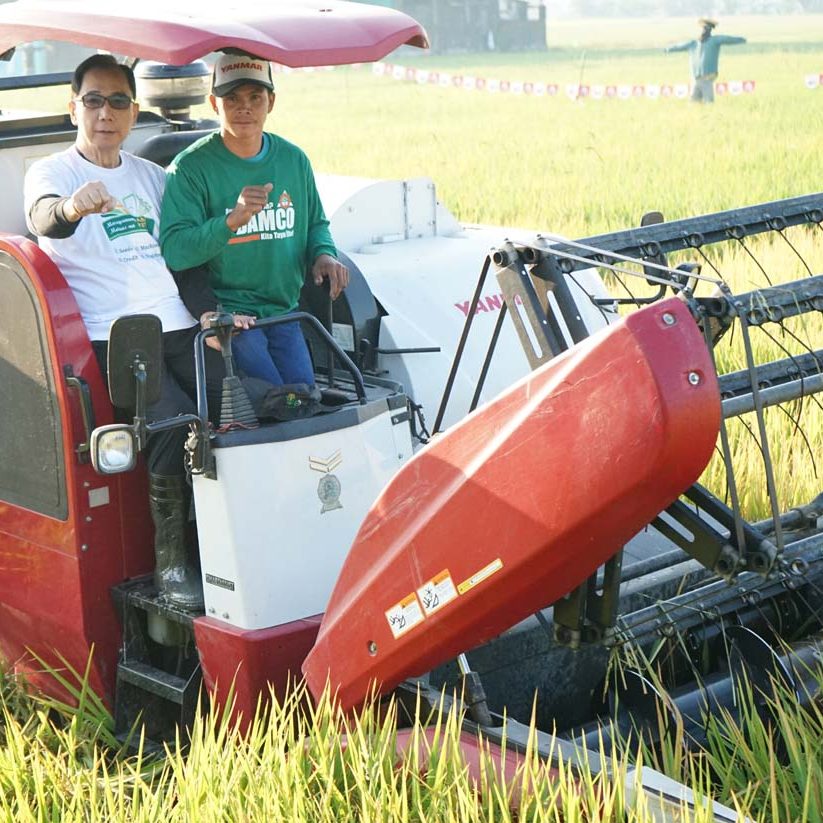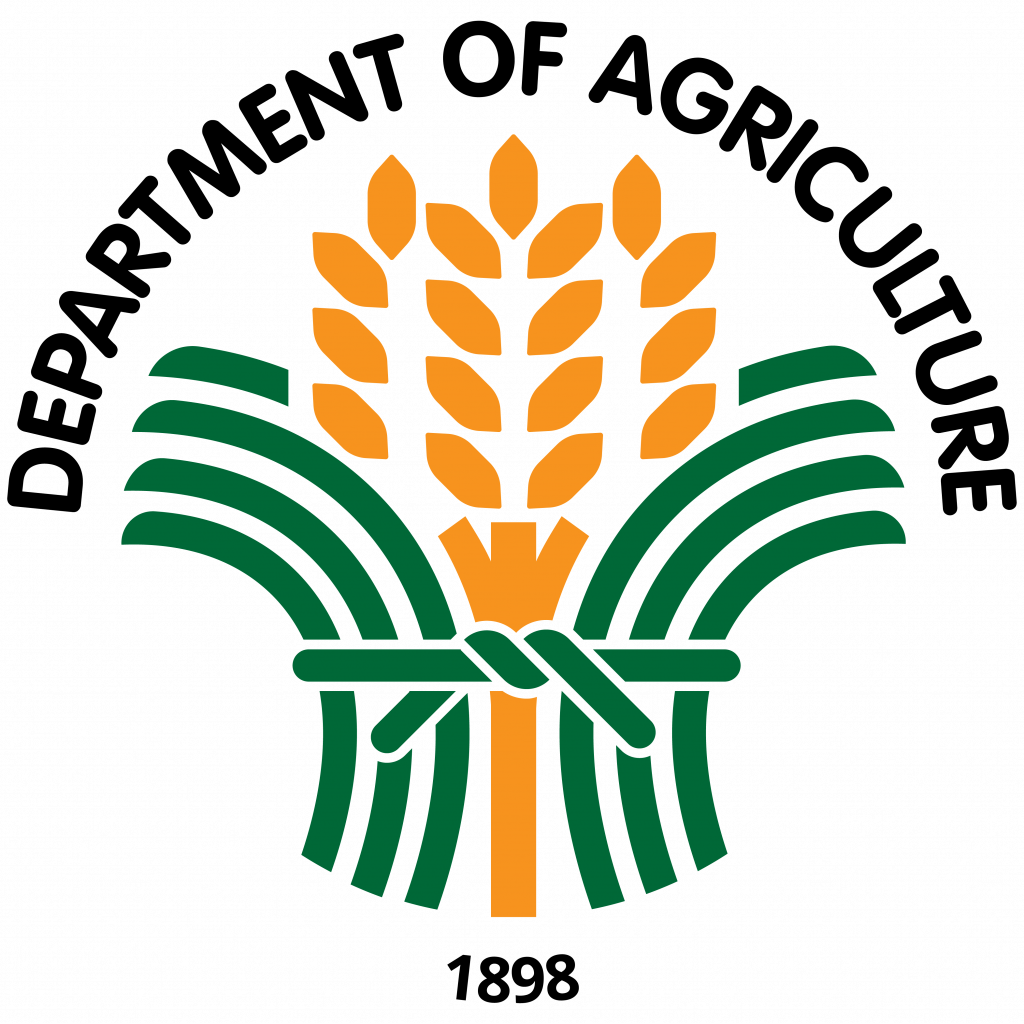
Despite the Covid-19 pandemic hitting the country from early 2020, the Philippines logged record palay (unmilled rice) harvests in 2020 and 2021, or 19.29 MMT or 19.96 MMT, respectively.
This enabled the country to maintain adequate rice stocks during the two most trying years of the pandemic, and ensure the country’s food security. The absence of rice nationwide from the onset of the pandemic is a testament to that.
The record palay harvests for two consecutive years is also proof of the success of the programs and initiatives under Rice Competitiveness Enhancement Fund (RCEF), which under Republic 11203 or the Rice Tariffication Law (RTL) is allotted P10 billion from 2019 to 2024 or a span of six years to modernize the country’s rice industry, and make it regionally competitive at least with its counterparts in Southeast Asia.
Of the yearly P10-billion RCEF budget, P5 billion is allotted for the free distribution of farm machinery and equipment, P3 billion for free distribution of inbred certified seeds, and P1 billion each for credit support and training of farmers and extension.
“The RTL is a transformative reform that benefits all industry stakeholders – most particularly farmers and consumers – as it liberalizes rice trade by imposing tariffs on imports in lieu of quantitative restrictions, and provides a yearly P10-billion budget through the Rice Competitiveness Enhancement Fund for six years to empower Filipino rice farmers and enable them to compete with their Asean counterparts,” said Agriculture Secretary William Dar.
“Despite the blabber and noise by detractors, we see the RTL and RCEF as testaments to what a sustainable policy can do to help ensure food security for more than 100 million Filipinos,” he added.
The P10-billion RCEF more than supplements the DA’s regular rice programs, namely: the National Rice Program (NRP) that has an annual budget of about P9 billion from 2015 to 2021; and the Rice Resiliency Program (RRP) with P8.5-billion funding as an economic stimulus response to the Covid-19 pandemic for the agricultural sector.
After three years of implementation, RCEF has achieved the following:
- Average palay production has increased by 17 percent to 4.26 metric tons (MT) per hectare (MT/ha) from 3.64 MT/ per hectare in 42 provinces covered by RCEF programs;
- Average production cost was reduced by P1, from P12.52 per kilogram (kg) to P11.52 per kg; and
- Seed requirement per hectare using mechanical seeder decreased by 67 percent, from 90 kg to 30 kg; and by 33 percent to 60 kg via manual method.
The ultimate aim of RCEF by 2024 or 2025 is to increase the country’s average palay production to 5 MT/ha from 3.64 MT/ha; reduce the production cost by P2/kg to P3/kg; reduce postharvest losses by 2 to 3 percent; and increase the average farmers’ income by 30 percent for those who have availed of RCEF drying and milling facilities.
Launched from 2019
The projects and programs under RCEF were launched one-by-one from 2019, or before the Covid-19 pandemic, which allowed the Duterte administration to ensure the country’s food security as the health crisis dragged on.
For the farm mechanization component, the number of farm machines procured by the DA-Philippine Center for Postharvest Development and Mechanization (PHilMech) as of March 31, 2022 reached 19,542 units, of which 19,285 units were distributed to qualified farmers’ cooperatives and associations (FCAs). These range from four-wheel tractors to mechanical seeders. The cost of the farm machines distributed so far by PHilMech almost reached P15 billion, covering three years of funding or from 2019 to 2021.
Benefiting from the distribution of farm machines at no cost were 5,361 FCAs, representing 112 percent of the target set for the mechanization component of RCEF.
For the distribution of seeds, the DA-Philippine Rice Research Institute (PhilRice) as of the 2022 dry season planting that ended last March, procured 1.822 million 20-kg bags of high-yielding rice seeds, of which 1.765 million were distributed to 713,052 farmers, or 99 percent of the target, and covered an estimated area of 813,909 hectares, or 90 percent of the target.
For the credit component, the Land Bank of the Philippines has reported a loan release of around P1.506 million, benefiting 8,902 individual borrowers, 149 farmer cooperative borrowers; and 18,301 farmer cooperative sub-borrowers. On the other hand, the Development Bank of the Philippines (DBP) has reported a loan release of P1.382 million, benefiting 16 individual borrowers; 21 farmer cooperative borrowers; and 22,356 farmer cooperative sub-borrowers.
For the extension component, 4,968 batches were trained involving 120,580 participants.
The RCEF also allowed the DA to extend much-needed financial assistance to rice farmers amid the pandemic, or allocate rice tariff collections in excess of P10 billion annually for that purpose. Called the Rice Farmers Financial Assistance (RFFA), it has benefited at least 1.8 million rice farmers who got cash assistance of P5,000 each. Qualified under the RFFA are rice farmers who were adversely affected by the drop in the palay prices as a result of the RTL’s implementation and cultivating lands above half a hectare but lower than two hectares.
With the RCEF programs and components now going full blast, Secretary Dar is confident of the country achieving another record palay harvest this year.
“To top it all, with sustained initiatives and strong cooperation of various rice industry stakeholders, we look forward to achieving an all-time record of at least 20.4 million MT of palay this year,” he added.
To avail of the programs under RCEF including the Rice Farmers Financial Assistance (RFFA) program, a farmer must register under the DA’s Registry System for the Basic Sectors in Agriculture (RSBSA).
Forms are available at the city or municipal agricultural office or can be downloaded at https://www.da.gov.ph/rsbsa-registration-and-updating/. Those filling up the forms will have to present the following: a government-issued ID; a recent 2×2 picture; and title of the land being farmed, any proof of ownership of a farmland, and lease agreement with the owner of a for a farm in cases of a farmer renting land.
The forms also need to be signed by the Barangay Chairman, Municipal Agriculture Office, and City/Municipal Agriculture and Fisheries Council Chairman.
The filled up forms and required documents are to be submitted to the city or municipal agricultural office, and a stub will be given to the beneficiary as proof of enrollment. (Special Features, The Manila Times)


